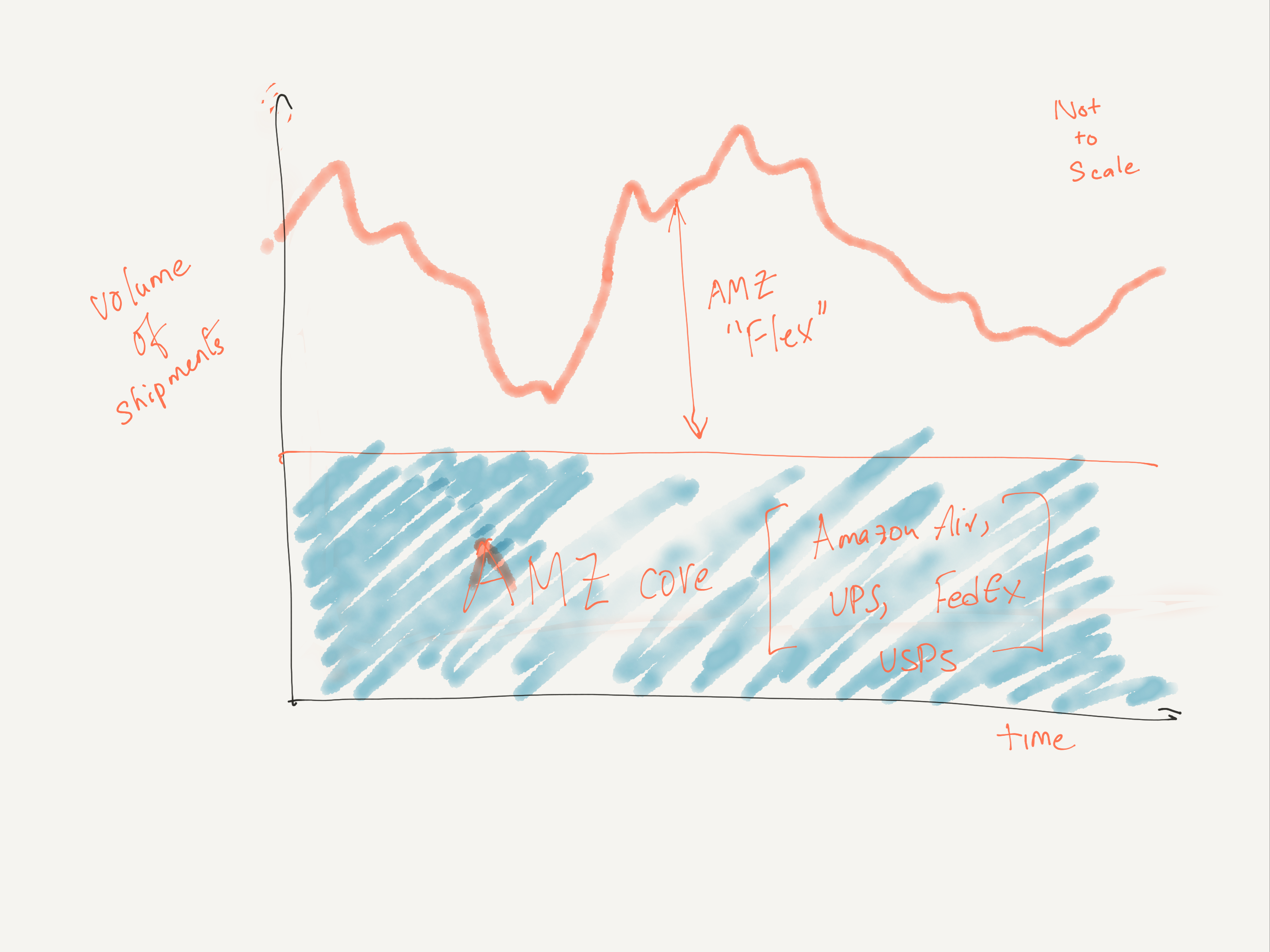Last-mile delivery problems are hard. Vaccine hesitancy is real but is often used as a crutch to hide the real lack of costly effort necessary to literally reach the doorstep of every person willing to be vaccinated. Lotteries and Prizes are great to kickstart the drive, but we need specific, costly, non-scalable efforts to achieve our goals of full recovery.
Leave a CommentTag: Last-Mile
I have desisted from posting my Covid notes, as the days grew grim and the world is inundated with desperation. Stay well, dear reader.
Instead, I will write about Shipping. The pressure of online orders during the pandemic finally got to the more efficient e-commerce firm in the US: Amazon. WSJ reports that Amazon will be suspending its delivery service, Amazon Shipping, which was created as a competitor to FedEx and UPS to ship items from third party businesses to their customers. I argue why.
Leave a CommentAn economy that has grown beyond belief is the e-commerce delivery market in China. It has become so central to modern Chinese life that the “food-delivery” has been dubbed as one of the 4 great inventions of modern Chinese civilization. For instance, Luckin Coffee (second only to Starbucks in China) has grown on the legs of its delivery business. No other product, not even pizza, exemplifies the need for exceptionally fast delivery need than hot coffee. […]
Leave a CommentHere is an interesting article from the Wall Street Journal about the struggles of scaling Automation at UPS. (An interesting tidbit: UPS says about half its packages are processed through automated facilities today. At FedEx, 96% of ground packages move through automated sites. ) The article seems to blame the problems of UPS on the lack of automation and having unionized employees. I think the main problem may be that the automation at UPS has grown organically in a slapdash fashion. In fact, the relevant quote is: As online-shopping volume grew, UPS relied on what a former UPS executive calls “a Band-Aid” approach to upgrading its network, patching it up by adding extra shifts or extending hours, or retrofitting parts of older…
Leave a CommentIn 2013, a guy who was trying to pitch a company, called DoorBot, that sold security doorbells, went nowhere on Shark Tank, as the sharks rejected his offer. The founder Jamie Siminoff positioned the idea at $7M. Here is the video. Last year, the company was valued at $460M. Last week, the company, now called Ring, was acquired by Amazon for $1B. This is not a post to castigate the poor assessments of Ring’s original business idea: As ideas evolve they get better, and some cosmic confluence of interests can be helpful for a firm. — Ring, at one Billion USD, is a tremendously expensive acquisition for Amazon. In fact, Ring is Amazon’s second-biggest acquisition, after Whole Foods. Similar large…
Leave a CommentFor long time e-commerce and operations observers, it was no surprise that Amazon was opening its “shipping” business: It was as predicable as a bowling ball on the lane slowly rolling to the pins. Much earlier, in 2014, Amazon had invested in a British shipping firm, Yodel. In 2016, Amazon had purchased a 25% stake in the French parcel Delivery company Colis Prive. Through FBA (Fulfillment by Amazon), Amazon already handles “logistics and shipping” for third party sellers – currently at 51% of all sales units (in 2017 Q4). It has been at that proportion for several quarters now. So no surprise, really. However, let’s talk about who is absolutely critical for Amazon to compete with UPS and FedEx. Compared…
Leave a CommentThrough the Seattle Times, here is a clip on the history of Amazon Prime. Below, I discuss two points on scaling Prime services. Two Points on Scaling: Scaling Volume: Prime was clearly a way to scale revenues through the volume of transactions, even at a huge setup cost, by introducing a subscription plan. An issue with scaling revenues this way is the stickiness of prices. It took a whole nine years for Amazon to go from $79 to a more profitable fee of $99. (I thought they would be raised to $108 at $9 a month – closer to NetFlix rates – but the fees were stickier than I had thought). Scaling Speed: It is much harder to scale on…
Leave a Comment